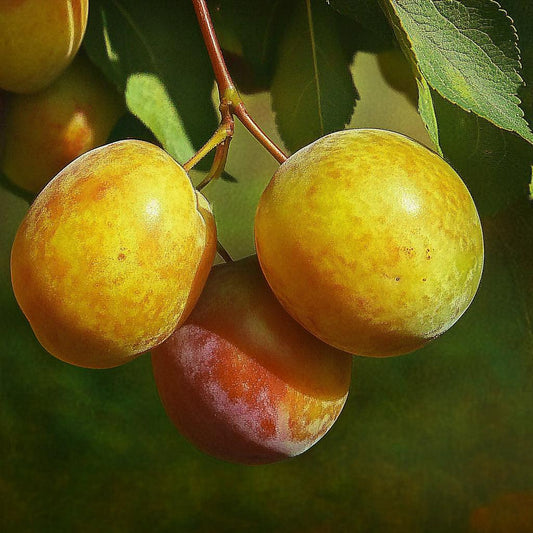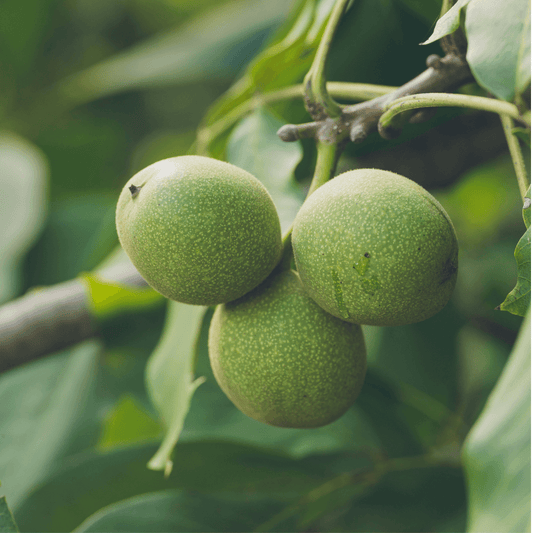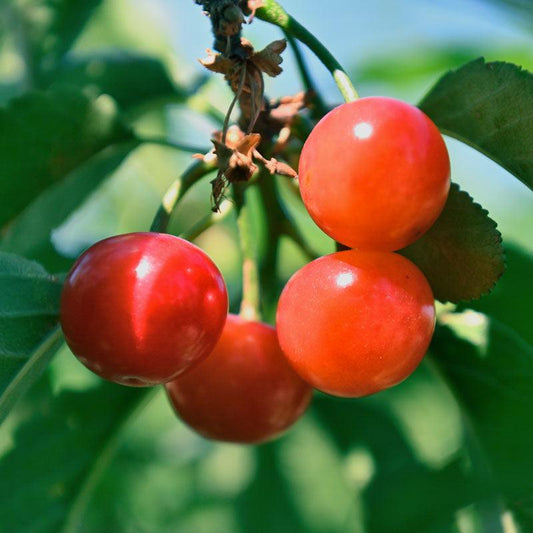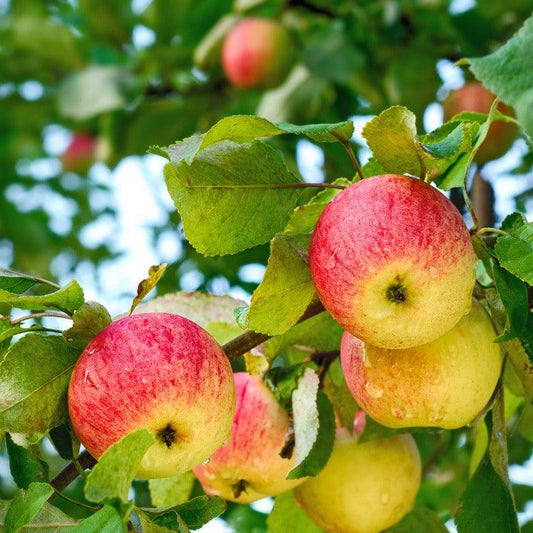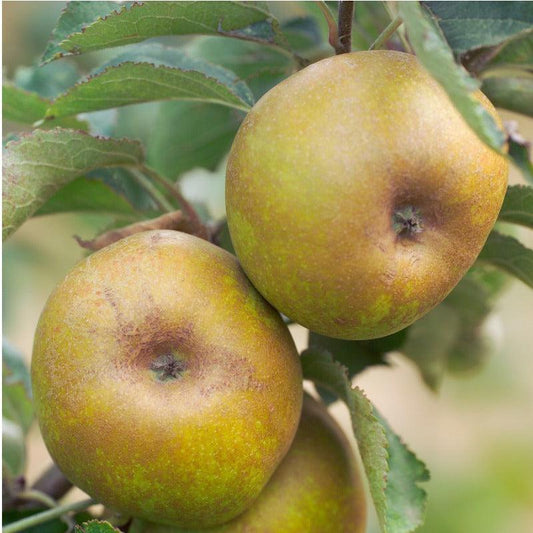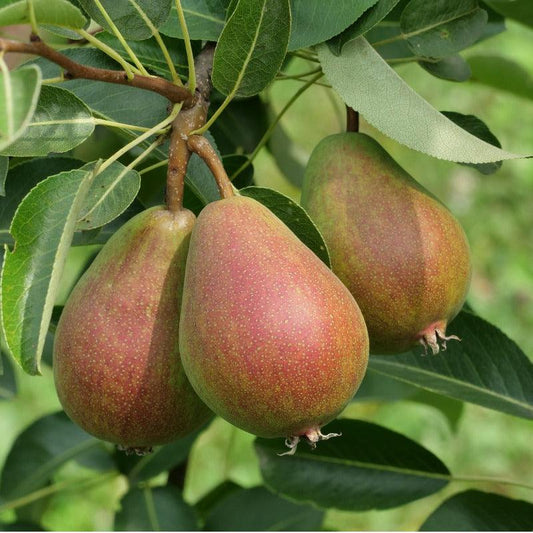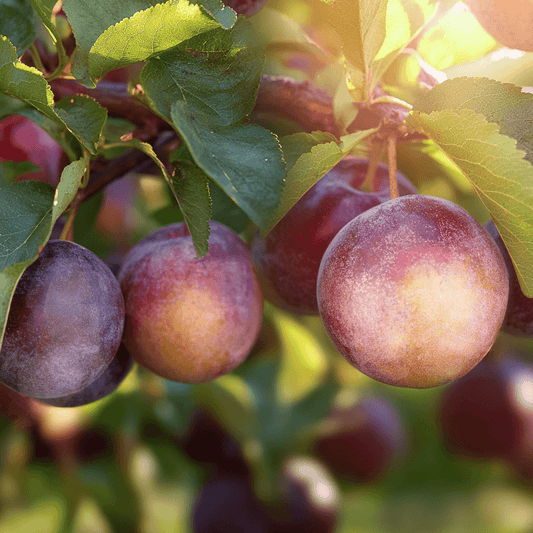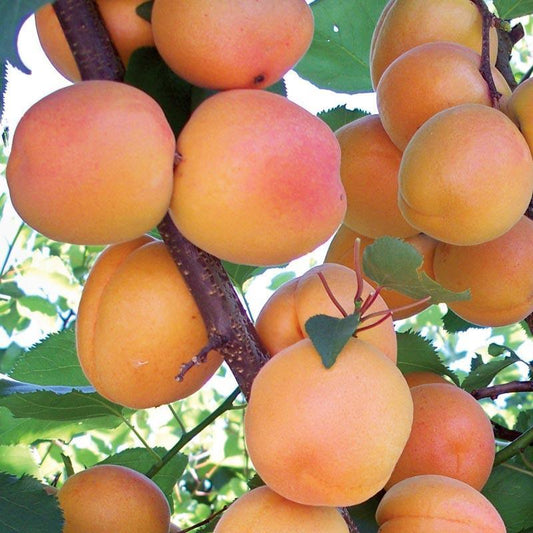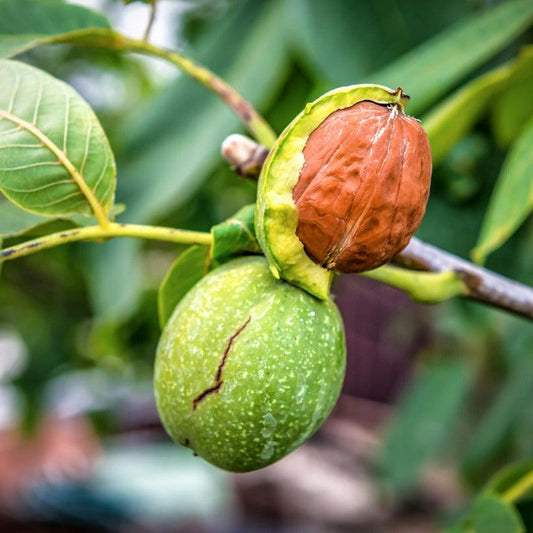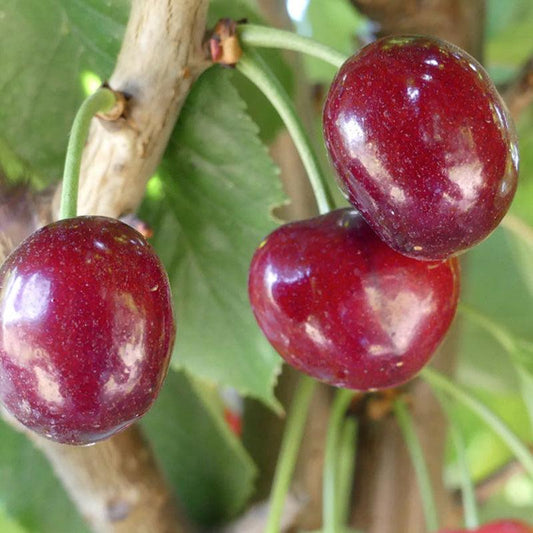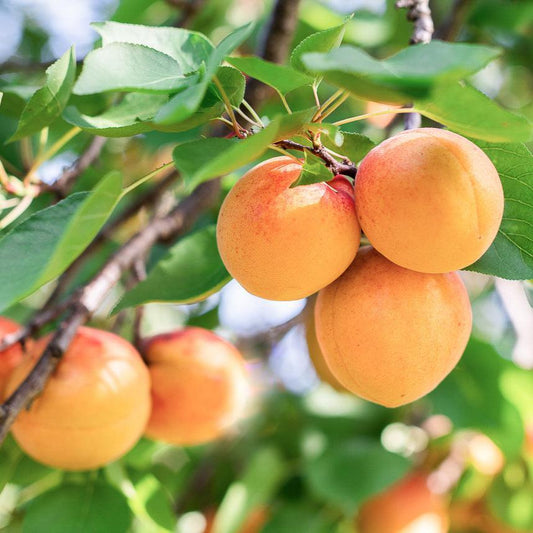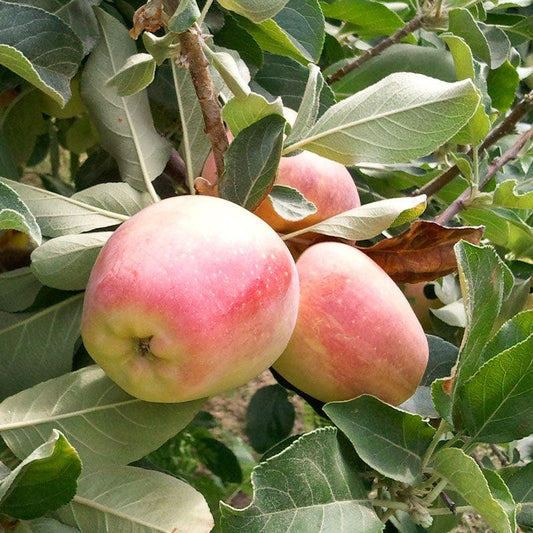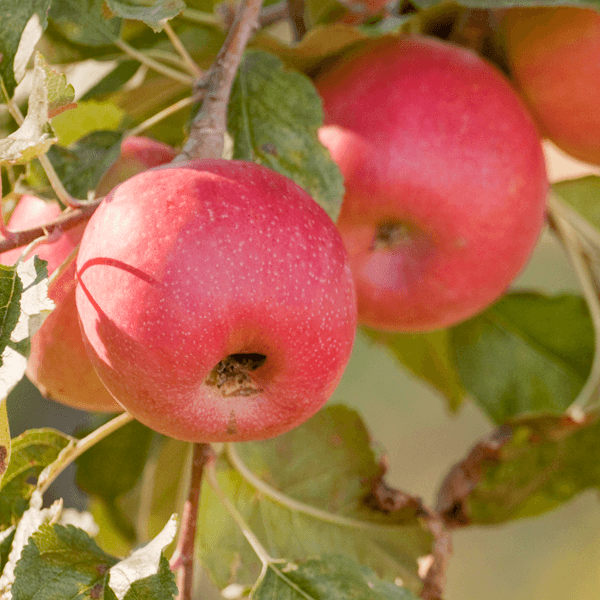For optimal success with your fruit and nut orchard, choose bare root trees that suit your USDA zone and meet the chill hour requirements for your climate. If your chosen variety needs a pollinator, plant it within 50 feet of the main tree, ensuring both varieties bloom simultaneously. Consider whether you prefer a single harvest for preserving or a staggered one for fresh eating throughout the season.
We offer a wide selection of bare root trees for sale, including over 150 premium varieties of fruit and nut trees. Our bare root saplings are shipped dormant to promote strong, healthy establishment in home orchards. Whether you're starting small or planting in bulk, our bare root trees are ideal for sustainable, homegrown food production.
Why choose our bare root trees for sale?
-
Most of our bare root trees are 1 to 2 years old, allowing you to enjoy fruit sooner!
-
The majority of our trees have a diameter (or caliper) of 1/2" to 5/8", ideal for easy establishment.
-
We guarantee that our bare root trees will leaf out by May 15th!
-
Many of our bare root trees are semi-dwarf, making harvests more manageable!
-
Choose from over 150 varieties of bare root trees and nut trees!
Opting for bare root trees is a cost-effective and rewarding way to start a thriving orchard. These trees are sold without soil around their roots, making them lighter, easier to plant, and typically more affordable than potted alternatives. Choosing the right rootstock is essential for the long-term health and productivity of your trees.
We offer a wide range of bare root trees for sale, including hardy bare root saplings ideal for both small gardens and larger orchards. These trees not only enhance your landscape but can also attract pollinators and other beneficial wildlife.
To protect your investment, consider using deterrents to keep pests like deer at bay. Many growers also explore our orchard supplies—from fencing to soil amendments—to support the success of their bare root trees.
1. Selecting Suitable Bare Root Trees:
The first step in growing bare root trees and nut trees is selecting the right tree varieties for your region and personal preferences. Consider factors such as your climate zone, available space, soil type, and desired fruit or nut types. If you're also interested in adding shade trees to your landscape, make sure to choose varieties that will provide the coverage you need while complementing your orchard's needs. Research the specific requirements of each tree variety to ensure they are compatible with your growing conditions.
2. Choosing Quality Bare Root Stock:
When purchasing bare root trees, it's crucial to select healthy and well-maintained stock. Look for the following characteristics:
-
Healthy Roots: Inspect the roots for any signs of disease, damage, or rot. Healthy roots should be firm, with numerous small feeder roots.
-
Straight Trunk: Ensure that the main trunk is straight and free from bends or deformities.
-
Balanced Branches: Check for a well-balanced framework of branches, evenly spaced around the main trunk.
-
Dormant Buds: Bare root trees are typically sold in the dormant season. Look for trees with dormant buds that are ready to burst into growth when planted.
When planning your orchard, consider the diversity of tree types available to create a dynamic and resilient landscape. Premium options like emla 111 rootstock and g.11 rootstock have become popular among growers seeking robust apple rootstocks that enhance fruit quality and tree health. Complementing these are classic selections such as apricot trees, cherry trees, fig trees, and even the nutrient-rich goji berry plant. Additionally, integrating mulberry trees, multi-budded fruit trees, olive trees, pawpaw trees, and peach trees can offer varied harvests and adapt well to different climates, ensuring a balanced and productive orchard that meets both aesthetic and nutritional needs.
3. Timing and Planting:
Bare root trees should be planted during their dormant season, which varies depending on the tree species and local climate. Typically, this falls in late winter or early spring, before bud break. Follow these steps for planting bare root trees:
-
Prepare the Site: Choose a sunny location with well-draining soil. Remove weeds, rocks, and debris from the planting area.
-
Dig a Hole: Dig a hole that is wide enough to accommodate the roots without bending or crowding. The depth should be sufficient to allow the tree to sit at the same level it was previously planted.
-
Soak Roots: Before planting, soak the tree roots in water for a few hours to ensure they are well-hydrated.
-
Position the Tree: Place the tree in the center of the hole, spreading out the roots evenly. Ensure that the graft union (if applicable) is above the soil surface.
-
Backfill with Soil: Gradually backfill the hole with soil, tamping it down gently to remove air pockets. Water the tree thoroughly to settle the soil around the roots.
4. Pruning and Training:
Pruning is an essential aspect of shaping and training your bare root trees and nut trees. Prune the tree immediately after planting to establish a strong framework and encourage healthy growth. Key pruning techniques include:
-
Removing Dead or Damaged Branches: Trim away any dead or damaged branches to promote overall tree health.
-
Establishing Scaffold Branches: Choose three to five well-placed scaffold branches that form a balanced framework around the central leader. Remove competing or poorly positioned branches.
-
Central Leader: Maintain a strong central leader by removing any competing vertical shoots.
-
Spacing and Height: Space scaffold branches evenly along the trunk and maintain an appropriate height for ease of maintenance and harvesting.
5. Mulching and Watering:
Mulching and watering are vital for the initial establishment and long-term health of bare root and nut trees.
-
Mulching: Apply a 2-4 inch layer of organic mulch, such as wood chips or straw, around the base of the tree. Mulch helps retain soil moisture, suppress weeds, and regulate soil temperature.
-
Watering: Adequate watering is crucial, especially during the first few years of growth. Provide consistent moisture to keep the soil evenly moist but not waterlogged. Deep watering is preferable to shallow, frequent watering.
6. Fertilization and Nutrient Management:
Understanding the nutrient needs of your fruit and nut trees is essential for ensuring their health and productivity.
-
Soil Testing: Conduct a soil test to determine the nutrient levels and pH of your soil. This information will guide your fertilizer choices.
-
Organic Fertilizers: Consider using organic fertilizers to provide essential nutrients to your trees. Apply fertilizers in early spring as the trees begin to break dormancy.
-
Micronutrient Management: Pay attention to micronutrients like iron, manganese, and zinc, as they can significantly impact tree health. Address any deficiencies through targeted nutrient applications.
7. Pest and Disease Management:
Protecting your bare root trees and nut trees from pests and diseases is crucial for long-term success. Implement the following strategies:
-
Pruning and Sanitation: Regularly inspect and prune your trees to remove diseased or infested branches. Dispose of pruned material away from the orchard.
-
Monitoring: Keep an eye out for signs of pests and diseases, such as discolored leaves, unusual growths, or insect activity. Early detection allows for prompt intervention.
-
Integrated Pest Management (IPM): Adopt IPM strategies, which combine cultural, biological, and chemical control methods to manage pests and diseases sustainably.
8. Thinning and Harvesting:
As your bare root trees and nut trees mature, they will produce an abundance of fruit. Proper thinning and harvesting techniques are essential to ensure fruit quality and tree health.
-
Thinning: Thin excess fruit to prevent overcrowding and improve the size and flavor of the remaining fruits. Thinning also helps reduce the risk of branch breakage due to the weight of the fruit.
-
Harvesting: Harvest fruit when it reaches the desired ripeness. Be gentle when picking to avoid damaging the tree or the fruit.
9. Winter Protection:
Protecting your bare root trees during the winter months is crucial, especially in colder climates.
-
Mulching: Apply a layer of mulch around the base of the tree to insulate the roots and protect them from freezing temperatures.
-
Wrap and Cover: Consider wrapping the tree trunk with tree wrap or burlap to shield it from winter sunscald and rodent damage. You can also use tree shelters or covers for added protection.
10. Maintenance and Pruning as Bare Root Trees Mature:
As your bare root trees and nut trees mature, ongoing maintenance is essential for continued health and productivity.
-
Regular Pruning: Continue to prune your trees to maintain their shape, remove dead or diseased branches, and encourage new growth.
-
Fertilization: Adjust your fertilization routine based on soil test results and the tree's specific nutrient requirements.
-
Stay vigilant against pests and diseases, using IPM techniques as needed.
Successful pollination is key to maximizing fruit production in apple trees, especially in colder climates like Zone 3 – 5. Choosing different varieties with overlapping bloom time ensures effective cross-pollination, while attracting pollinators like bees is essential for fruit set. Proper orchard management, including summer pruning, can improve airflow and light penetration, promoting healthier blooms. Protecting young trees with tree tubes and fencing helps prevent damage from wildlife, which can be a major deterrent to growth. By selecting the right fruit varieties for your region and aligning them with the local bloom season, you can establish a productive and resilient orchard.
11. Benefits of Bare Root Trees
Bare root trees for sale offer an economical and efficient way to establish a productive orchard. Our bare root trees are shipped dormant and lightweight, with roots wrapped in moist material and sealed to prevent drying during transit. This ensures each tree arrives healthy and ready to plant in fall or early spring—ideal seasons for strong root development.
We provide high-quality bare root saplings, including fruit, nut, and berry varieties, all carefully packaged for optimal success. Planting bare root trees not only supports sustainable growing but also rewards gardeners with abundant, homegrown produce. Whether you're starting your first orchard or expanding an existing one, our selection of bare root trees for sale makes it easy to grow fresh, delicious food right at home.
For more information, see our collection of bare root tree articles at Fruit Tree Central.
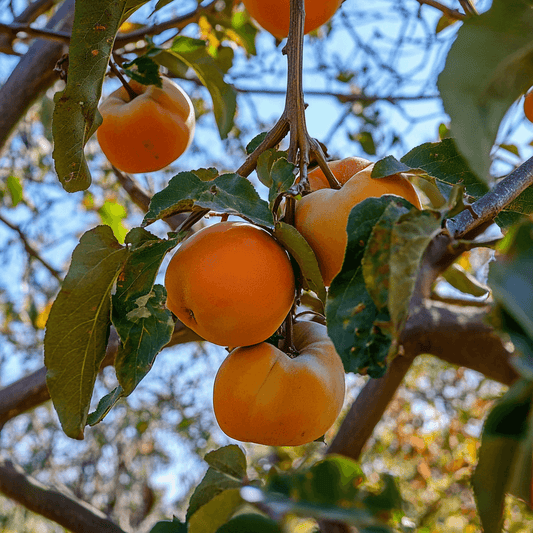 Sold out
Sold out Sold out
Sold out Sold out
Sold out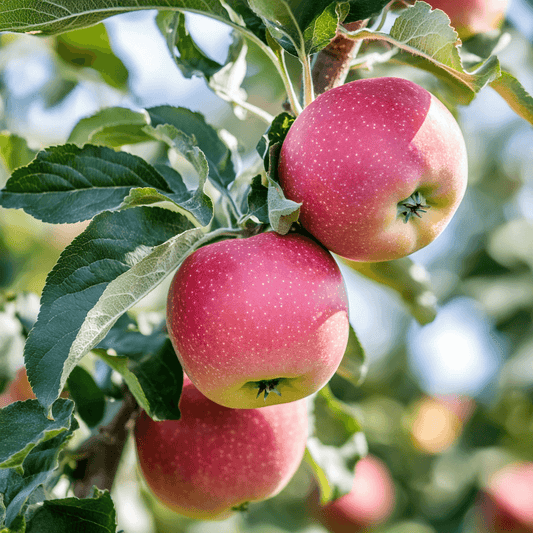 Sold out
Sold out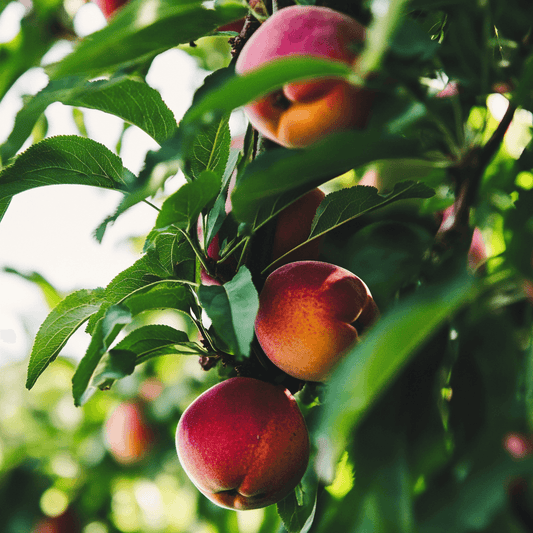 Sold out
Sold out Sold out
Sold out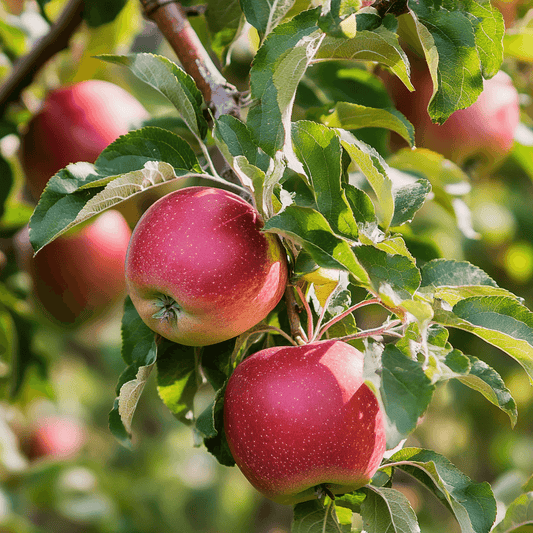 Sold out
Sold out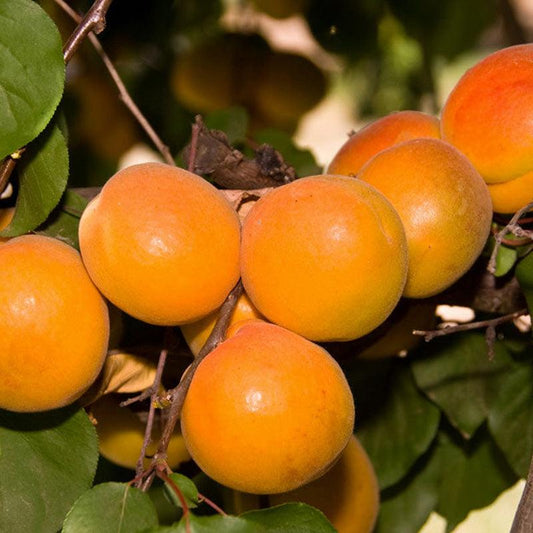 Sold out
Sold out Sold out
Sold out Sold out
Sold out

